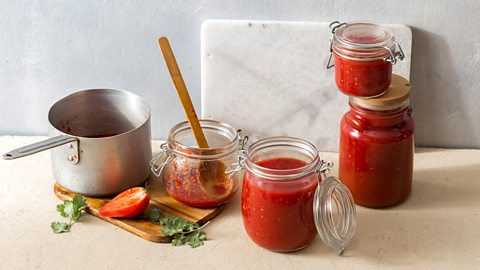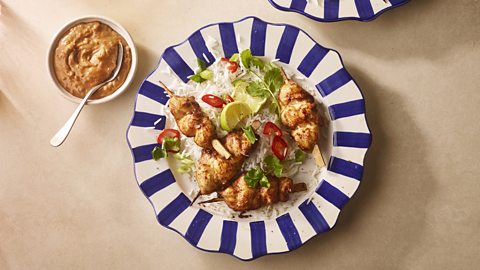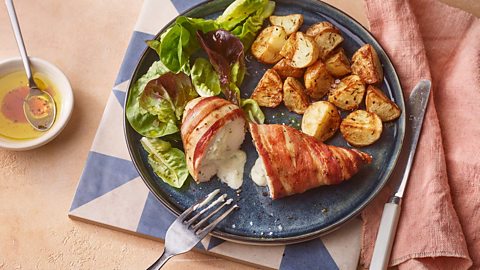The unexpected student store-cupboard staples
While tins of baked beans and big bags of rice are always great to have on hand, savvy student shopping can go much further. Here are seven ingredients that will more than earn their place in your allotted share of cupboard space.
By Elly Curshen

When it comes to typical student meals, what springs to mind? Frozen pizza? Instant noodles? Well, I’m about to throw the likes of pearl barley risotto with roasted squash, basil and ricotta and pasta with spicy tomato sauce and crispy pitta breadcrumbs in there too, because you can make both for a similar price. They involve minimal effort (and far more excitement), too.
I’ve come up with a student meal plan – including the above recipes and plenty more besides – featuring a week’s worth of lunches and dinners for under £17 in total.
Like any good meal plan, it makes use of some great store cupboard staples which keep well, are easy to cook with and will help turn the most basic of meals into something a little more special – but they’re not necessarily the ingredients you’d automatically think of.
Here are seven which are worth stocking up on.
A basil plant
While a bottle of dried, mixed herbs is hard to beat when it comes to convenience and price, it’s well worth keeping a basil plant around. Place it on a saucer in spot where it will get some daylight – but not direct sunshine – and water it from the bottom. Then pick leaves as and when you need them. It will last much longer than a pack of cut basil and carry far more, fresher flavour than dried herbs. Just a few leaves added to pasta, sauces and salads will bring so much flavour and scent. On top of that, the kitchen will get a sweet-smelling houseplant!
Pearl barley risotto with butternut squash, basil and ricotta
Basil leaves are added to this pearl barley risotto to add a fresh flavour to the creamy dish

Olive pomace oil
This sounds fancy but it’s just an oil blend which is a mixture of olive and a cheaper type of oil such as rapeseed. The benefit of this is that it’s less expensive and more versatile than pure olive oil. Extra virgin olive oil has great flavour but is pricy and has a low smoking point, which doesn’t make it great for cooking at high temperatures, and while your average vegetable, rapeseed or sunflower oils are better for frying and cooking at high heat, you won’t get the flavour you’d have from olive oil. Using a cheaper oil means you can just get a small bottle of real extra virgin olive oil for things like dressings, and make it last.
Sea salt flakes
Stick with me: I know that regular, fine salt is a lot cheaper, but you won’t regret investing a couple of quid on a tub or box of this stuff. It’ll last you ages and can improve your cooking in ways that table salt could never. To get the most from coarse salt flakes, crush them over your finished dish, just before serving: the flavour and texture are unrivalled. Yes, it’s a little more expensive, but you’ll find simple, budget meals (like egg on toast or some roasted veg, for example) are a world apart when sprinkled with flaky salt rather than fine table salt. The same applies to pepper: if you can, use freshly ground black pepper for way more flavour. Properly seasoning your food is the easiest way to make your cooking better.
6-minute egg with garlic yoghurt, chilli brown butter and toasted pitta
When you're in a rush this - or just don't want to spend a long time in the kitchen this egg and pita dish will appeal. Up the flavour by using sea salt flakes
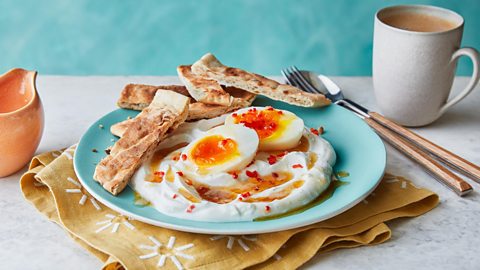
Tinned beans
Beans have become a cliché student food, but I’m not talking about baked beans here, rather tinned beans in water. They’re down the same aisle in the supermarket and are often cheaper than the stuff in tomato sauce. They’ll rapidly expand your meal options too – you could use black beans for vegan enchiladas, cannellini beans for a quick salad or kidney beans in a veg-packed jambalaya. Not only are they versatile and easy to cook with, but they’re packed full of nutrients, counting as both a protein source and one of your five a day. Get into the habit of building meals around beans and pulses, rather than meat or fish or processed veggie and vegan products and watch your food bill come right down.
Dry red lentils
We all know that rice and pasta are popular options for students – and for good reason. They’re affordable (especially when you buy in bulk), quick and easy to use and will go with a variety of dishes. All virtues that also apply to dry red lentils. They’re the least hard work of all the dried lentils – they don’t need soaking, just a brief rinse in a sieve – and can be added straight into dishes like soup. They are cooked when they turn pale yellow and retain no bite. You can blitz them for a smooth soup or leave chunky. They’re also ideal in curries, dal and lasagne.
Spinach and coconut dal with pitta and yoghurt
Red lentils are so versatile and unlike some other dried beans and pulses require no soaking in advance
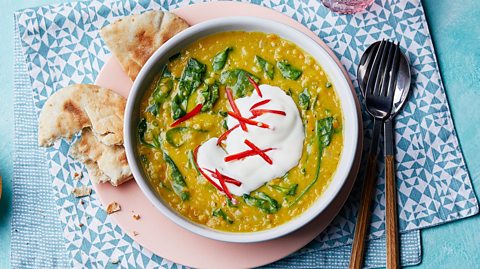
Tinned sardines
When you think of tinned fish your mind probably jumps straight to tuna. Yes, that’s great for classics like jacket potatoes and tuna pasta bake, but tins of sardines are also super cheap. They’re ideal with pasta and whatever greens are in season. I love the ones that come in a spicy tomato sauce, so you get both a protein and flavour hit.
Pasta with spicy sardine and tomato sauce and crispy pitta breadcrumbs
Always opt for tuna in the tinned fish aisle? Next time, reach for sardines, they're cheap and bring a great flavour to dishes
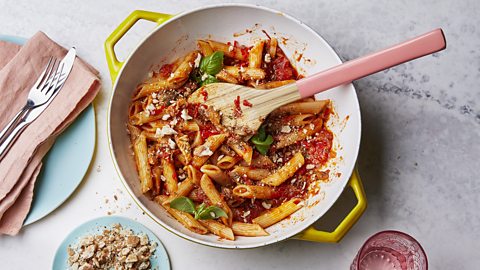
Frozen spinach
Go beyond the bags of sweetcorn and peas down the freezer aisle and find the spinach – it’s such a great standby ingredient. Plus, one bag of frozen spinach is equivalent to at least 10 bags of fresh, so it works out much cheaper. No chance of it going slimy either – it can sit in the freezer and you can just take out a block or two whenever you need it and add straight into your cooking. Alternatively, defrost some in advance, squeeze out the excess moisture and use it as you would fresh, in dishes like spinach and ricotta pasta and spinach and chickpeas with bread.
My extra money-saving tips
Use what you buy: Bought a cauliflower with leaves? Use them! Don’t want to eat the end slice of bread? Blitz it up to make breadcrumbs. Cooked too much pasta? Make a pasta salad the next day. Every single penny and scrap of food counts.
Don’t always go for the budget option: Sometimes cheap is a false economy. Spend as much as you can afford on the basics (especially dairy). For example, if you’re making cauliflower or macaroni cheese, you’d need far less of a strong cheddar than a mild equivalent. The flavour pay off cannot be underestimated.
Learn versatile recipes: Having some flexible recipes in your arsenal will make shopping cheaply easier. Think of dishes like a frittata – you can make that with any vegetables that are cheap or on offer.
Speedy miso noodles with soft boiled egg
An egg will turn something good into something great, like this tasty and filling noodle dish
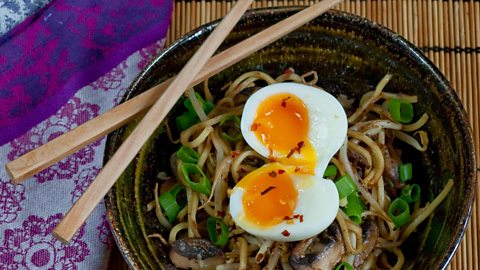
Stick an egg on it: This is a great mantra for making meals more filling and adding protein. A jammy, soft-boiled egg, nestled into a bowl of noodles is a fantastic cheap and quick meal.
Be savvy with storage: Wash out glass jars once they’re empty and use them to store small amounts of leftovers – they’re airtight and make it easy to see what’s inside, so you’ll be reminded of what you need to use up every time you open the fridge. Even a tiny bit of something is worth saving. Likewise, wash out takeaway tubs and use for larger portions of leftovers – no need to buy special containers. Always label the leftovers you freeze – you’ll quickly forget what they are.
Originally published September 2023
